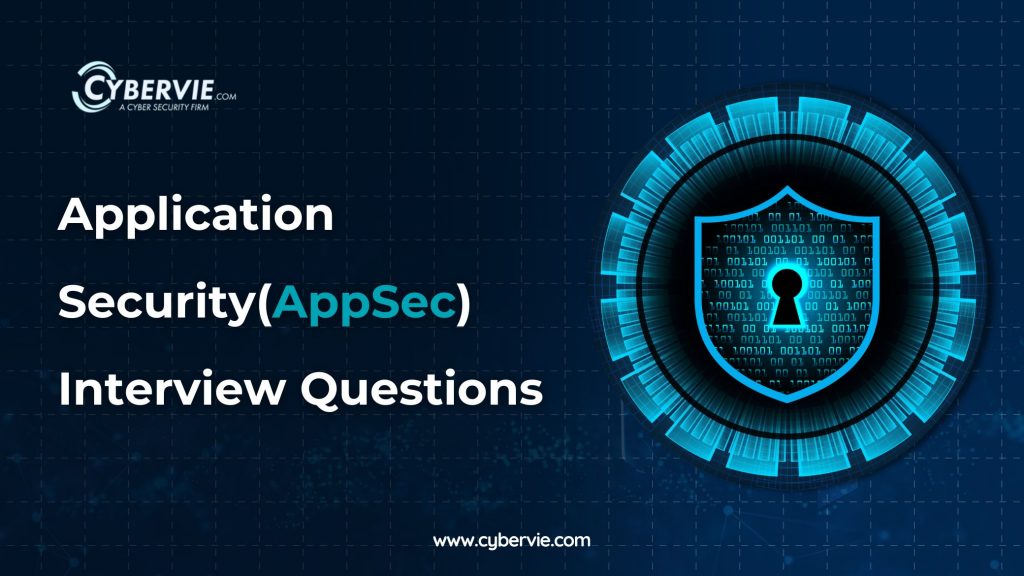Top 10 Application Security Interview Questions with Answers 🏆
In the rapidly expanding field of cybersecurity, application security stands out as a critical area where organizations are investing heavily to protect their data and systems. As a job seeker or an employer in this field, it’s essential to understand the types of questions that are commonly asked during an application security interview. For candidates, preparing for these appsec interview questions can give you the edge you need to land the job. For hiring managers, asking the right questions can ensure you find the most qualified application security engineer to safeguard your applications.
Below, we’ve compiled a list of the top 10 application security interview questions, complete with insightful answers to guide both candidates and employers through the interview process.
Understanding Application Security
Before diving into the specific interview questions, let’s briefly touch on the importance of application security.
“Application security refers to the measures taken to prevent data or code within an app from being stolen or hijacked. It encompasses the security considerations that happen during application development and design but also involves systems and approaches to protect apps after they get deployed”
Now, let’s explore the top interview questions.
Top 10 Appsec Interview Questions:
- Which architecture is more secure? 2-Tier or 3-Tier
- Explain the difference between encryption, hashing, and encoding.
- Recommend XXE mitigation for applications that require DTDs to be called because of business requirements.
- Explain CORS and SOP.
- Does SOP mitigate CSRF attacks?
- If you have API calls that need to fetch credentials, what will be the most secure way to store secrets and make them available for API calls?
- Blacklisting or whitelisting: Which one is more secure, and why?
- Which method is secure? Compress first and then encrypt the data, or encrypt first, then compress.
- Briefly discuss the role of information security in each phase of the software development life cycle.
- You found that one of your applications uses a vulnerable dependency named ‘x’; what would be your best approach to addressing this issue?
Video Resource:
Check out our video on “Application Security Interview Questions” on our YouTube channel: Click Here
Let’s get started !!
Which architecture is more secure? 2-Tier or 3-Tier
Answer: 3-tier architecture is considered more secure due to several reasons:
- Separation of duties: Segregating presentation, application logic, and data tiers makes it difficult for attackers to gain access to sensitive data.
- Access control: By controlling what data can be accessed by users at each tier, the 3-tier architecture enhances security.
- Reduced attack surface: Dividing the application into multiple layers reduces the overall attack surface, limiting the impact of potential breaches.
Explain the difference between encryption, hashing, and encoding.
Answer: Encryption, hashing, and encoding are fundamental techniques used to secure data, but they serve distinct purposes. Encryption involves transforming plaintext into ciphertext using an algorithm and a key, ensuring confidentiality. Hashing generates a fixed-size hash value from input data, providing data integrity and authenticity verification. Encoding converts data into a different format for transmission or storage, without necessarily providing security.

Recommend XXE mitigation for applications that require DTDs to be called because of business requirements.
Answer: XML External Entity (XXE) attacks exploit vulnerabilities in XML parsers by injecting malicious entities, leading to data exposure or server-side request forgery. For XXE mitigation:
- Disabling DTDs: Utilize whitelisting techniques to disable the use of Document Type Definitions (DTDs).
- Secure external entities: Implement secure external entities and validate user input to prevent XXE attacks.
- Use secure XML parsers: Employ XML parsing libraries with built-in protections and validate input against a predefined schema.
Explain CORS and SOP.
Answer: Cross-Origin Resource Sharing (CORS) and Same-Origin Policy (SOP) are mechanisms that control how web browsers interact with resources from different origins. CORS allows web servers to specify which origins are permitted to access resources, while SOP restricts interactions between resources from different origins to prevent unauthorized access and protect sensitive data.

Does SOP mitigate CSRF attacks?
Answer: Although Same-Origin Policy (SOP) helps mitigate certain types of attacks by restricting interactions between different origins, it does not fully prevent Cross-Site Request Forgery (CSRF) attacks. CSRF attacks exploit the trust a web application has in a user’s browser to perform unauthorized actions on behalf of the user. To mitigate CSRF risks, additional measures such as using anti-CSRF tokens or implementing strict input validation are necessary.
If you have API calls that need to fetch credentials, what will be the most secure way to store secrets and make them available for API calls?
Answer: Storing API credentials securely is essential to prevent unauthorized access and protect sensitive data. The most two secure approach are:
- Dedicated tools: Utilize dedicated secrets management solutions such as AWS Key Management Service (KMS) or HashiCorp Vault to securely store and manage credentials.
- Environment variables: Store sensitive information as environment variables specific to your development environment.
Blacklisting or whitelisting Which one is more secure, and why?
Answer: Whitelisting is generally more secure because:
- Limited access: Whitelisting allows only approved entities or actions, reducing the attack surface and minimizing the risk of unauthorized access or exploitation.
- Comprehensive control: Unlike blacklisting, which relies on identifying and blocking known threats, whitelisting provides comprehensive control over authorized entities.

Which method is secure? Compress first and then encrypt the data, or encrypt first, then compress.
Answer: The order of operations for data compression and encryption can impact security and performance. Encrypting data before compression is generally more secure, because
- Encryption of scrambled data: Encrypting data before compression ensures that sensitive information remains protected even during transmission or storage.
- Maintained security: Compressing encrypted data retains its security while optimizing storage and transmission efficiency.
Compressing data before encryption may expose sensitive information to potential vulnerabilities, such as compression side-channel attacks.
Briefly discuss the role of information security in each phase of the software development life cycle(SDLC).
Answer: Information security plays a crucial role in every phase of the software development life cycle (SDLC), from planning and design to implementation, testing, deployment, and maintenance. By integrating security measures throughout the SDLC, organizations can identify and address security vulnerabilities early, minimize risks, and build secure and resilient software systems.
For more information on SDLC relating with Application Security: Click Here

You found that one of your applications uses a vulnerable dependency named ‘x’; what would be your best approach to addressing this issue?
Answer: Identifying and addressing vulnerable dependencies is essential to maintain the security of applications. The best approach to addressing this issue involves a combination of strategies
- Identify the Vulnerability
- Patch the Vulnerability, if patch not available use dependency pinning, Use secure headers, thorough code review, monitoring.
Conclusion
Application security is a vital component of an organization’s overall security posture. Whether you’re preparing for an interview or conducting one, understanding these top 10 appsec interview questions can help you navigate the complexities of application security. Candidates should use these questions as a study guide, while hiring managers can use them to assess the knowledge and problem-solving abilities of their prospective hires.
Application security roles demand a mix of technical skills, an understanding of the latest security risks and trends, and the ability to effectively communicate and implement security measures. With the right preparation and mindset, you can tackle these appsec interview questions with confidence and demonstrate your commitment to safeguarding applications in a world where security is more important than ever.









